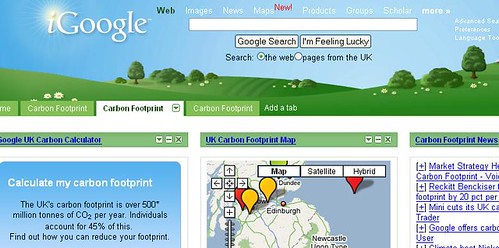
Google today gets all my love. They have just built a great interface and set of carbon-busting mashups, leveraging the AMEE back-end. You can calculate footprint, but also post videos through Sky about your own carbon-busting efforts.
Google’s implementation is based on the underlying Act on CO2 data provided by Defra and others. It makes some additional assumptions (based on data from the Energy Saving Trust) to get the number of questions down to a “manageable” few pages (specifically around appliances).
I am particularly pleased to report this initiative is driven by Google UK. sweet. Anyway- go check it out.
